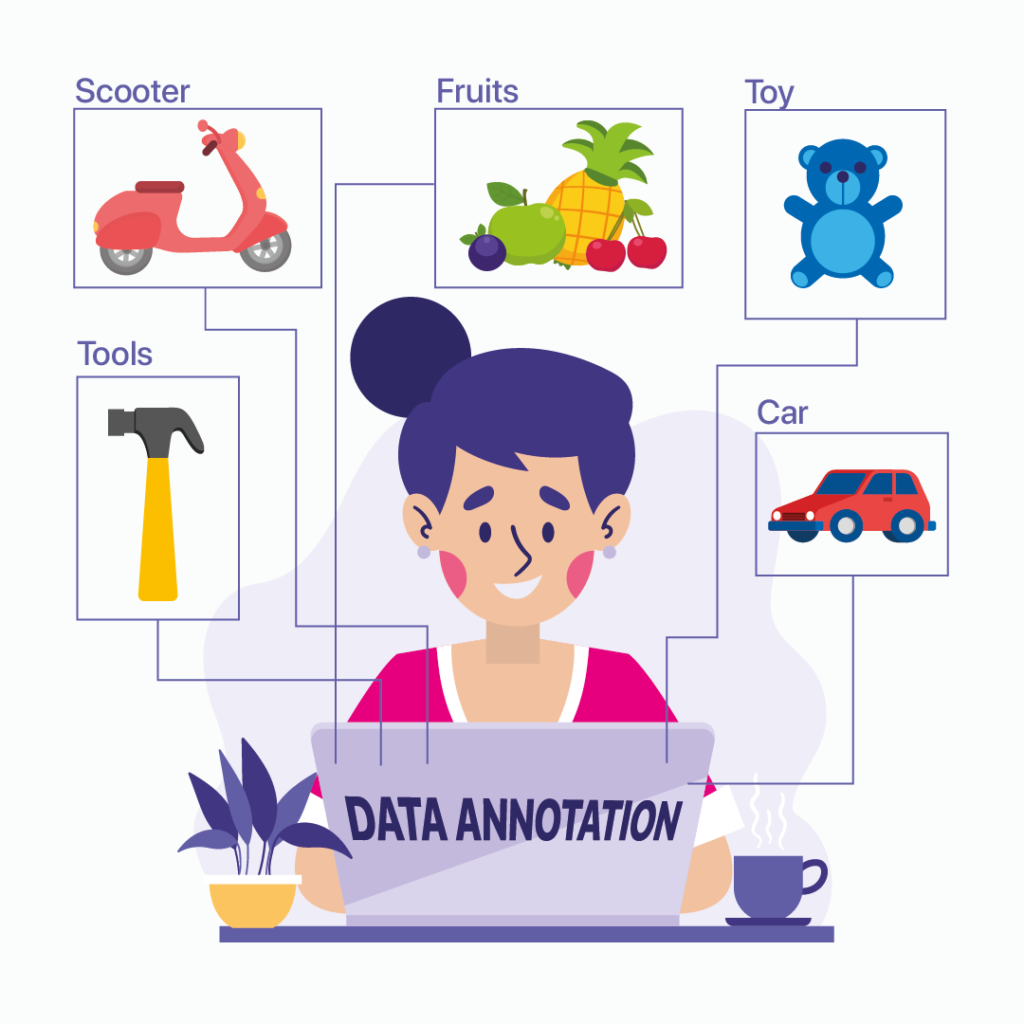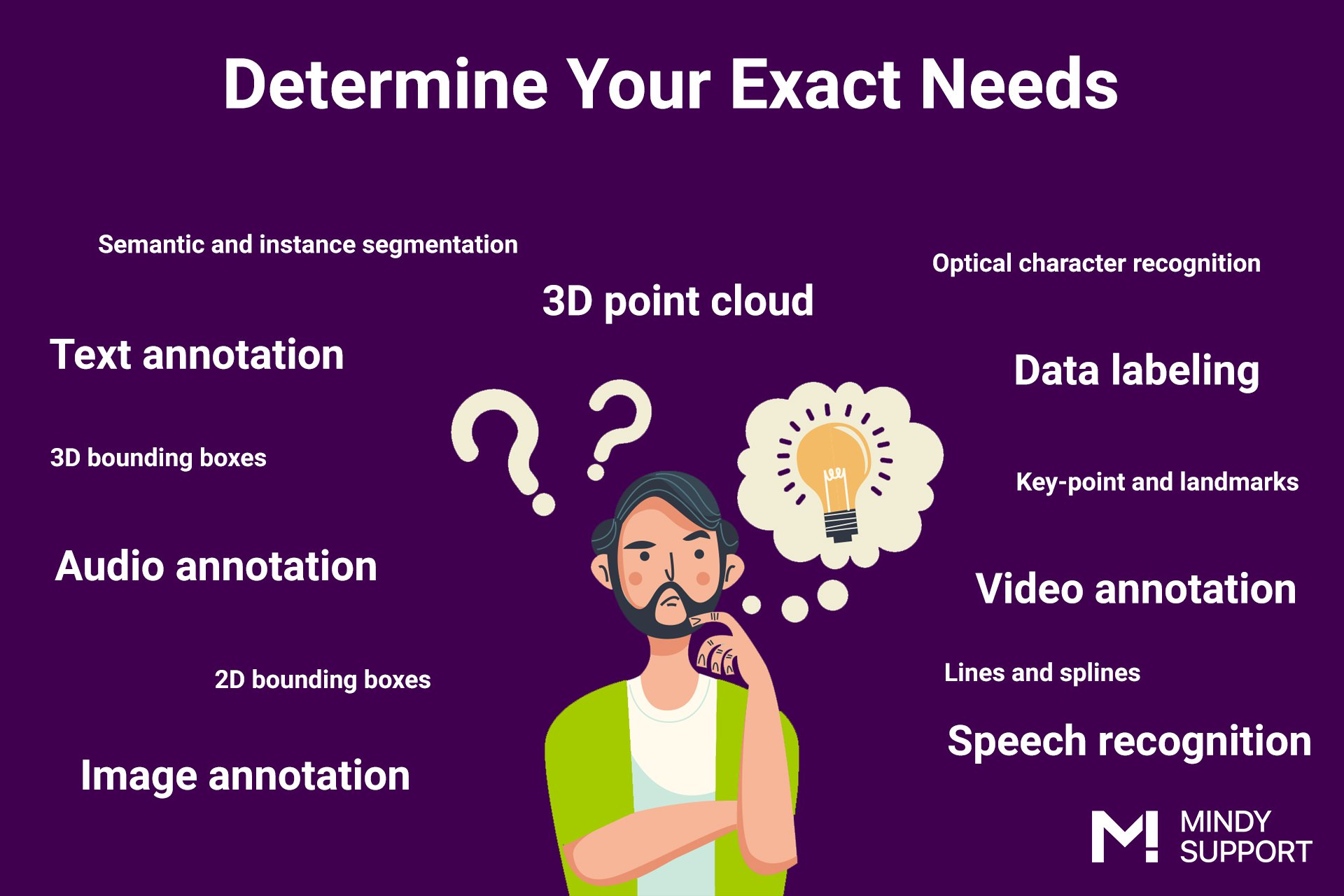Data annotation is the workhorse behind AI and ML algorithms, creating highly accurate ground truths that directly impact algorithm performance. Annotated data is critical for AI and ML models to accurately understand and detect input data.
Smart devices and smart life have become an integral part of our daily lives. From self-driving cars, smart and nudge replies to emails, estimated time of arrival via GPS app, to the next song in the streaming queue – everything is powered by artificial intelligence (AI) and machine learning (ML) .

In order to do all of this, AI and machine learning models need input data; lots of data. Data is the backbone of AI and ML algorithms. Computers cannot process visual information the way the human brain can. The computer needs to be told what it is interpreting and provide context to make a decision. Data annotation establishes these connections.
Data labeling ensures scalability of AI or ML projects. Identifying and labeling specific data, images, and videos is a human-led task, making it easier for machines to recognize and classify information like humans, and make predictions. Without data labelling, ML algorithms cannot easily compute essential properties.
Data Labeling Challenges for AI and Machine Learning Companies
The use of artificial and machine learning platforms is becoming commonplace. Yet thick hype and vague jargon belie the challenges AI and ML companies face in delivering accurately labeled training datasets.
Higher quality training datasets: The quality of labeled data determines the fate of AI and ML projects. Train models to recognize patterns and relationships between variables; AI and ML companies must provide accurately labeled datasets. Analytics firms cannot afford misaligned bounding boxes and clutter in classifiers. These mistakes can be catastrophic. Don’t forget that the ability of AI and machine learning models to deliver personalization and efficiency depends on precisely curated and labeled data.
AI and ML models require large amounts of data: ML projects often require thousands or even millions of labeled training items to be successful. While the goals of machine learning projects can vary widely in complexity, they all have one requirement in common: large amounts of high-quality data to train models on.
Key benefits of using data annotation for AI and ML models
Data annotation facilitates a deeper understanding of the meaning of objects, allowing algorithms to perform better.
Improve the accuracy of AI and ML models
Computer vision models were run with varying levels of accuracy on images where multiple objects were accurately labeled, while objects were not or poorly labeled in the images. Therefore, the better the annotation, the higher the accuracy of the model.
Fast track model training
Data analytics service providers saw a 54% reduction in machine learning project TAT. The data labeling firm studied footage of traffic lights to identify and tag vehicles based on their class, model name, color, and direction of travel. It is only through data annotation that an AI and ML model can understand what it needs to do with the input data. As a result, the model can quickly learn to apply efficient processing to labeled data and generate meaningful results.
Easily create labeled datasets
Data labeling simplifies preprocessing, which is an important step in the process of building machine learning datasets. In a classic case, more than 40,000 images were labeled and fed into a machine learning model, using a mix of manual and automated workflows. It helped a Swiss data analytics solutions company tackle food waste in leading hotels and restaurants. Therefore, normalizing data annotation services results in the creation of massive labeled datasets on which AI and ML models can perform functional operations.
Simplified end user experience
Well-labeled data provides a seamless experience for users of AI systems. Effective smart products solve users’ problems and queries by providing relevant assistance. Capabilities for related behaviors are developed through annotation.
Progressive AI engine reliability enhancements
The axiom that increasing the amount of data increases the accuracy and precision of AI models only holds if there is a well-established data labeling process to supplement the models with labeled data. Therefore, as the amount of data explodes, so does the reliability of the AI engine.
Empowering extended implementation
Data annotation adapts sentiment, intent, and action from multiple requests. Annotated data helps create accurate training datasets, enabling AI engineers and data scientists to scale mathematical models for any number of different datasets.
4 main data annotations and annotation types
Data labeling for machine learning is a broad practice, but every type of data has a labeling process associated with it. Some commonly used data labeling types include:
1. Text annotation
Text tagging is common in search engines, where words are tagged to enable search engine algorithms to load pages containing search keywords. Tags help match keywords to URLs in a database and allow search engines to quickly generate the results searchers want. Here’s a practical insight:
Self-driving cars are one of the many use cases where video annotation is crucial. Technically, it splits the video into frames, and each frame classifies objects of interest. Thus, video annotation provides great visibility into road traffic patterns, driver behavior in vehicles, accident-prone locations, etc., thereby significantly improving road safety.
Applied using a range of techniques (e.g. bounding boxes, polygons), image annotation involves marking objects of interest in an image. Elements are predetermined by machine learning experts to complement computer vision models with the necessary knowledge. Various techniques can be used to label objects in an image, depending on the context

4. NLP Annotation for Speech Recognition
In NLP annotation, language is the focus, and annotations are used to unlock the deepest insights from the nature of language. The NLP tagging process includes part-of-speech (POS) tagging, phonetic tagging, semantic tagging, key phrase tagging, discourse tagging, etc., to capture the characteristics of language structure. It enables machine learning systems to interpret meaning and understand context like humans.
The Future of Data Annotation with Technological Advances
In conclusion, a large number of positive forecasts for the data labeling market can be attributed to technological trends following the future of space.
Smart labeling tools will dominate the future of artificial intelligence and machine learning. Powered by predictive analytics, data labeling will be fully automated, detecting tags without any human intervention.
The reporting framework will be an integral part of the data labeling process. Operational intelligence will provide an understanding of how to handle labeling complexity. Reporting capabilities will be a great add-on to monitor annotation throughput and productivity.
Automation coupled with strong quality control is essential to properly label large volumes of data due to the need to maintain accuracy levels. This will be a key feature of the next generation of data labeling, where the real focus is not on pure labels, but on measurement and quality labels.
Rely on data annotation services to improve the performance of machine learning projects. They use a combination of skilled human annotators, labeling tools, and proven workflows to generate, structure, and label large amounts of training and testing data.
in conclusion
The correct application of data annotation is only possible when you leverage a fine combination of human intelligence and intelligent tools to create high-quality training datasets for machine learning. The MIT Technology Review report rightly states that correctly annotated data is the biggest challenge to using AI. Enterprises should build strong data labeling capabilities to support the construction of AI&ML models and prevent them from failing miserably. We humans are a step above computers in that we are better at handling ambiguity, deciphering intent, and several other factors that affect data labeling.
Accurately annotated data can make the difference between creating high-performance AI/ML models as solutions to complex business challenges, or wasting time and resources on failed experiments. And when there is a lack of time and resources to build these capabilities, consulting a data annotation company is a wise move. In addition to time and cost optimization, Data Labeling Expert enables you to quickly scale your AI capabilities and conceptualize machine learning solutions to meet market demands and customer expectations.
